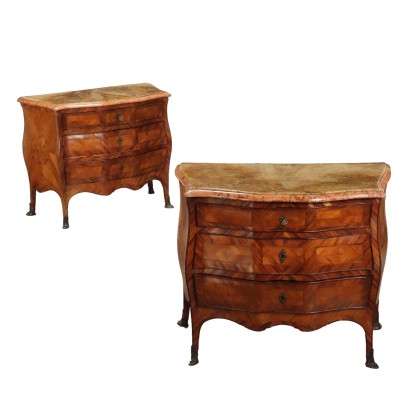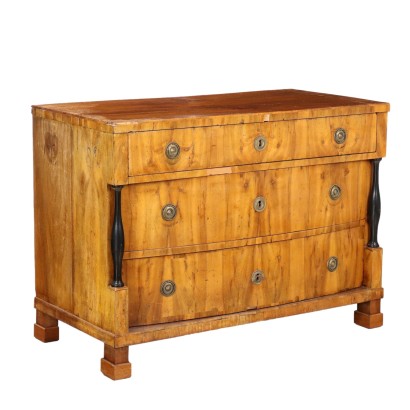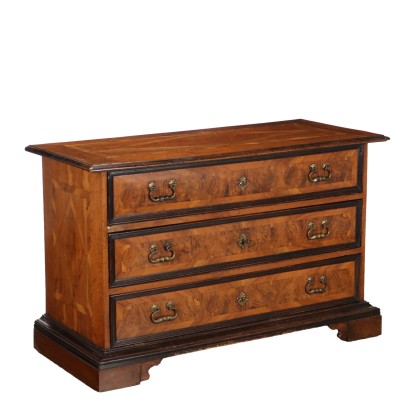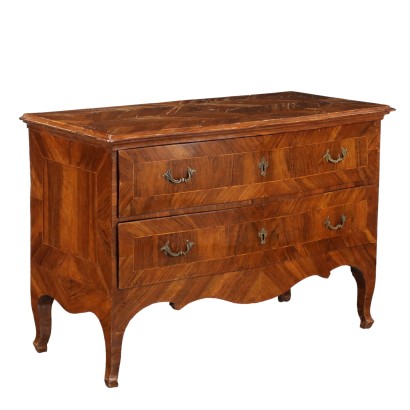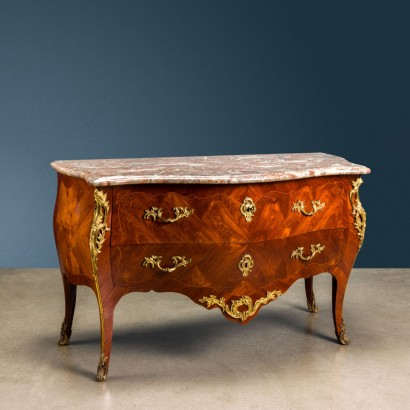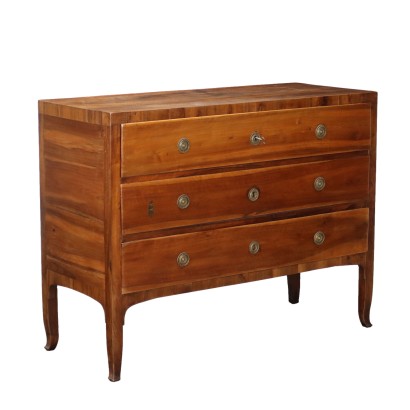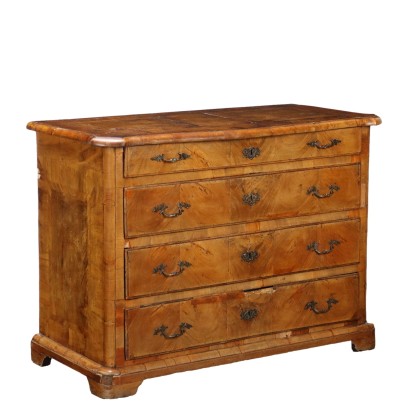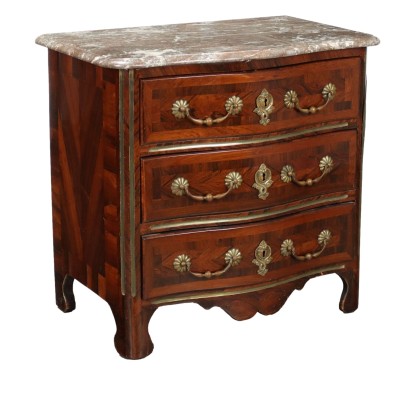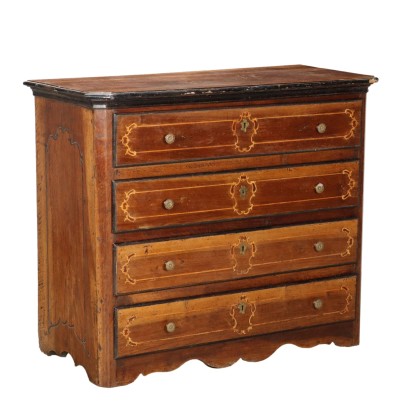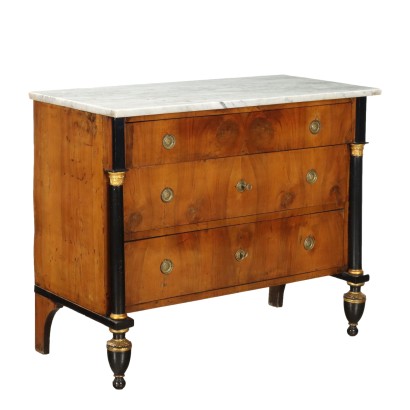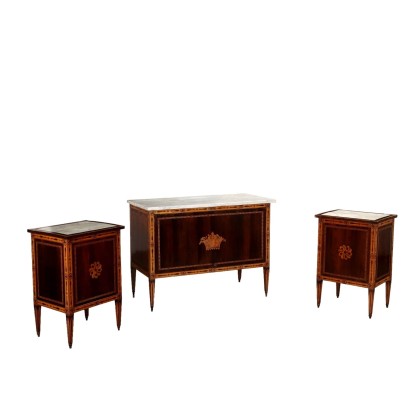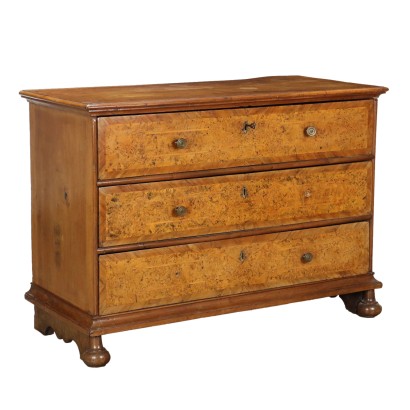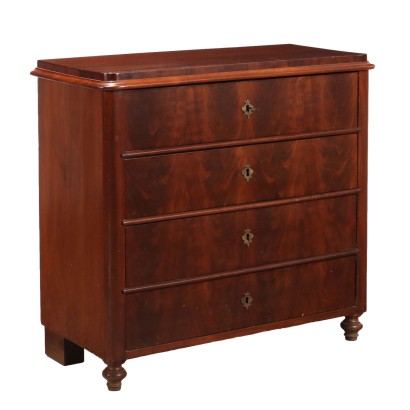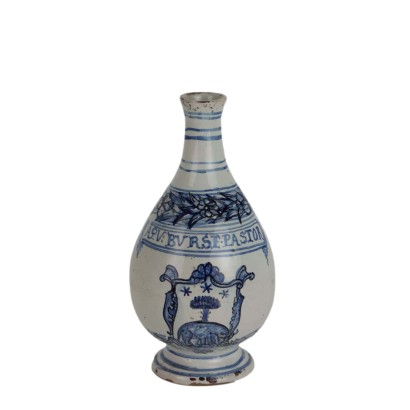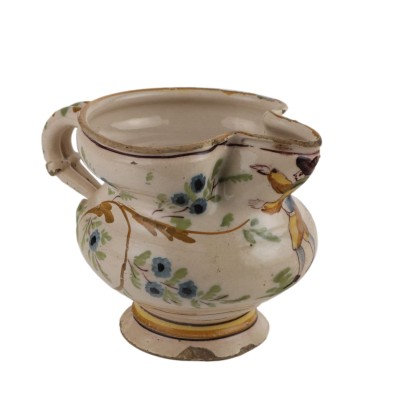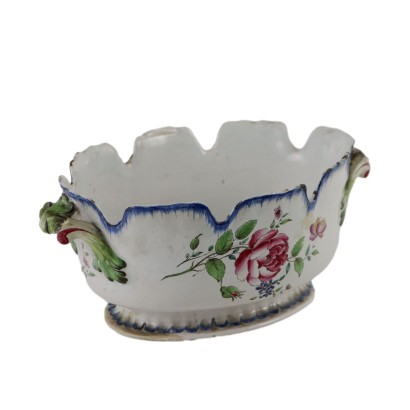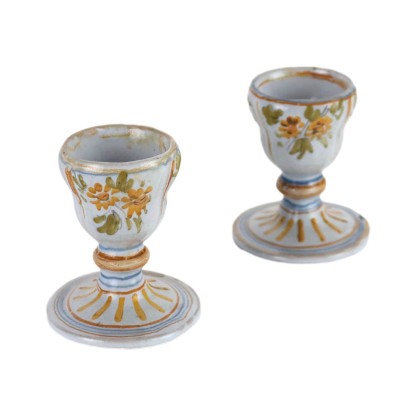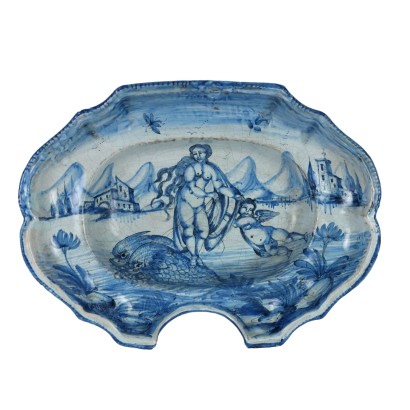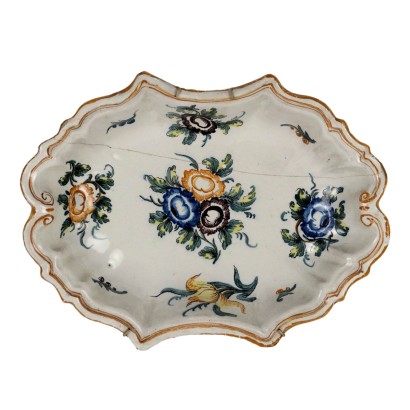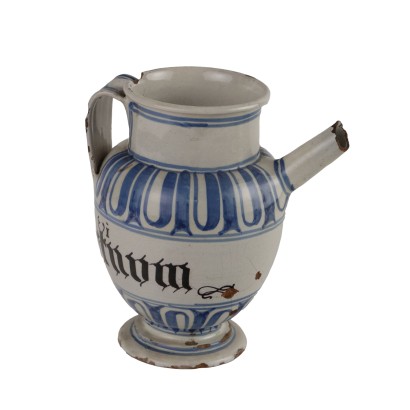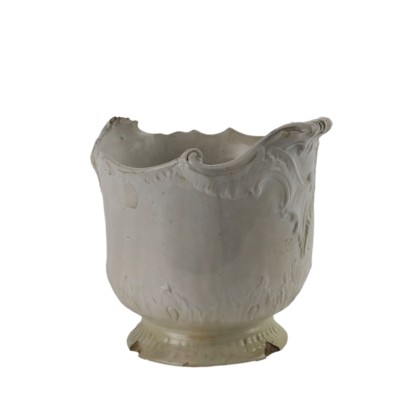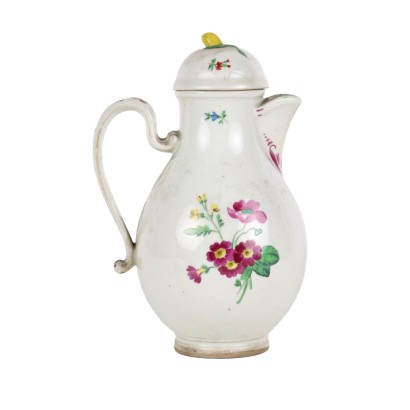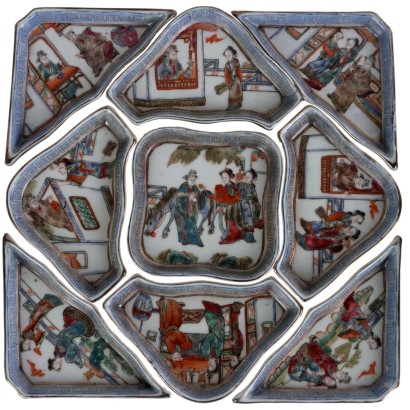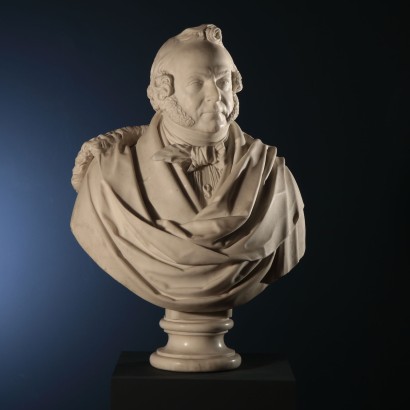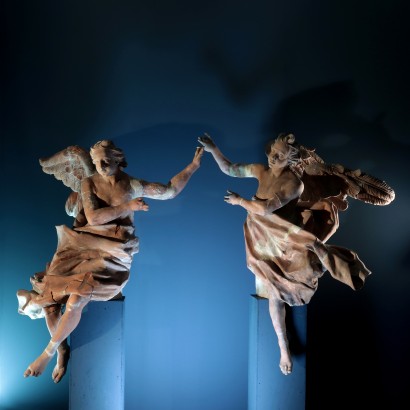Antique Chests of Drawers Bois de Violette Naples XVIII Century - Naples, Late XVIII Century
Features
Naples, Late XVIII Century
Style: Barocchetto (1720-1770)
Age: 18th Century / 1701 - 1800
Origin: Napoli, Campania, Italy
Main essence: Tulipwood
Description
Pair of Neapolitan Rococo chests of drawers. Completely rounded in shape, or made with a vertical and horizontal movement, they are made with the internal hull in poplar and then veneered in quadripartite Bois de violette enriched with borders in contrasting grain, reserves on the drawers and a polylobed rosette on the sides. The whole is played by contrasting the marked grain of the same wood, even the pronounced edges of the uprights and the edge of the drawers are made of bois de violette worked on the head. The top has a riser on the bottom to insert a wall paneling on which the shelves rest, made of marble veneered in a rare flowered alabaster with borders in red Verona marble. According to the construction canons of the highest Neapolitan cabinetmaking, the drawers and the top are separated by a poplar diaphragm to limit access to dust. The feet are covered with bronze shoes that have lost their gilding. These applications, like the rounded shape of the furniture are very similar to the pair of chests of drawers published by Alvar Gonzalez-Palacios, the only difference (in addition to the inlay decoration) is the apron of the front that is lowered with a double move on the front and with an asymmetrical movement on the sides. On the back there is a transport label while under one of the shelves there is a paper label with sealing wax with the writing "C Napoli - 47 - Pignatelli". The furniture clearly comes from a luxury context, extrapolated from a boiserie that must have covered the entire room in which it was inserted; probably a study given the unusual and rare dimensions of the two pieces of furniture. The furniture of this era, if made for important commissions, always has a choice of fine marbles as can be seen in the examples preserved at the Museo Duca di Martina in Villa Floridiana in Naples. Restorations and small missing parts.
Product Condition:
Product that due to age and wear may require restoration and polishing. We try to present the real condition of the furniture as completely as possible with the photos. If some details are not clear from the photos, what is reported in the description is valid.
Dimensions (cm):
Height: 82
Width: 101
Depth: 53
Additional Information
Notes historical bibliographic
- Alvar Gonzalez-Palacios, The Temple of Taste, Rome and the Kingdom of the Two Sicilies, ed. Longanesi 1984 - Enrico Colle, Rococo Furniture in Italy, ed. Electa 2003Style: Barocchetto (1720-1770)
This term refers, specifically to furniture, to a part of the production carried out in Italy in the period between the Rococo era and the first phase of neoclassicism.It is characterised by the formal and decorative structure still rigidly in adherence to the dictates dear to the Baroque period (hence the term barocchetto) and to the Louis XIV fashions and yet the new times can be seen in the adoption of smaller volumes, more elegant decorative modules, often directly inspired by French fashion, but always executed with rigorous principles of ornamental symmetry.
The tendency to assimilate formal and volumetric innovations but not to incorporate their ornamental elaboration finds a natural explanation in Italy in the fact that in this century the great aristocracy is experiencing an unstoppable political and economic decline.
If in the previous century there was a great profusion of furnishings intended to decorate recently built homes, to proudly show the power of the commissioning family, in In the 18th century, the focus was on updating the building with only the furniture strictly necessary for the new needs imposed by fashion or functional needs.
The old scenographic apparatus was maintained and the new must not contrast too much.
Find out more about the Barocchetto with our insights:
Classic Monday: discovering the Barocchetto
Classic Monday: between Baroque and Baroque
Classic Monday elegant and unusual with two Baroque balustrades
FineArt: Pair of Late Baroque Chairs, Venice
Emilian chest of drawers, first quarter of the 18th century, early Late Baroque
Urn shelf, Milan, mid-18th century
INSERT ADDITIONAL LINKS:
Classic Monday: The Austrian Taste of Baroque
Classic Monday: Pietro Longhi's Baroque
Classic Monday: The Sculptures of the Italian Baroque
Age: 18th Century / 1701 - 1800
18th Century / 1701 - 1800Main essence: Tulipwood
Obtained from some types of acacia, it is a hard essence, with purplish-colored veins, used in the inlays, in which, alongside the bois de rose, it generates beautiful contrasts. Also useful for making bronze accessories stand out.Other customers have searched:
Approfondimenti
Scopri di più su cassettiere e comò grazie ai nostri approfondimenti:La storia nascosta in due antichi cassettoni
Conoscere il Neoclassicismo attraverso un cassettone piacentino
Un comò piemontese influenzato dal fascino per l'Oriente
Un signorile comò rococò napoletano
Una caratteristica cassettiera con alzata emiliana di perfetto gusto barocchetto
E per gli appassionati dal gusto più raffinato, c'è FineArt:
Commode a tre cassetti G.B.M., inizio XIX secolo
Canterano dipinto
Canterano emiliano, primo quarto XVIII
Cassettone a ribalta romano, secondo quarto XVIII secolo
Comò attribuito a Luigi Viglione, Luigi XVI, fine XVIII, Torino
Coppia di comò e comodino di Maggiolini
Sull'antiquariato in generale dai un'occhiata anche a
Classic Monday: da un pezzo dei nostri magazzini alla storia dell'antiquariato
L'antiquariato dalla A alla Z: il Dizionario dell'Antiquariato
Il dizionario dell'antiquariato - Lastronatura
Il dizionario dell'antiquariato - Mascherone
Il dizionario dell'antiquariato - Natura morta
Il dizionario dell'antiquariato - Opificio
Il dizionario dell'antiquariato - Pastiglia
Il dizionario dell'antiquariato - Savonarola
Il dizionario dell'antiquariato - Rosone
Product availability
The product can be seen at Cambiago
Immediate availability
Ready for delivery within 2 working days from ordering the product.

